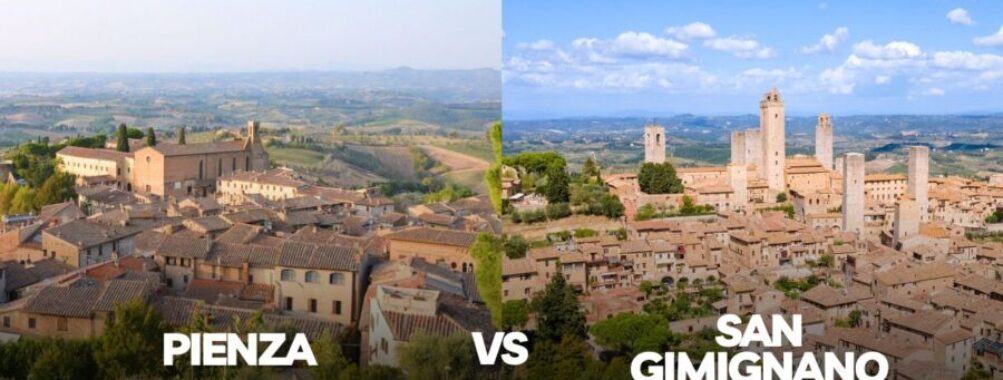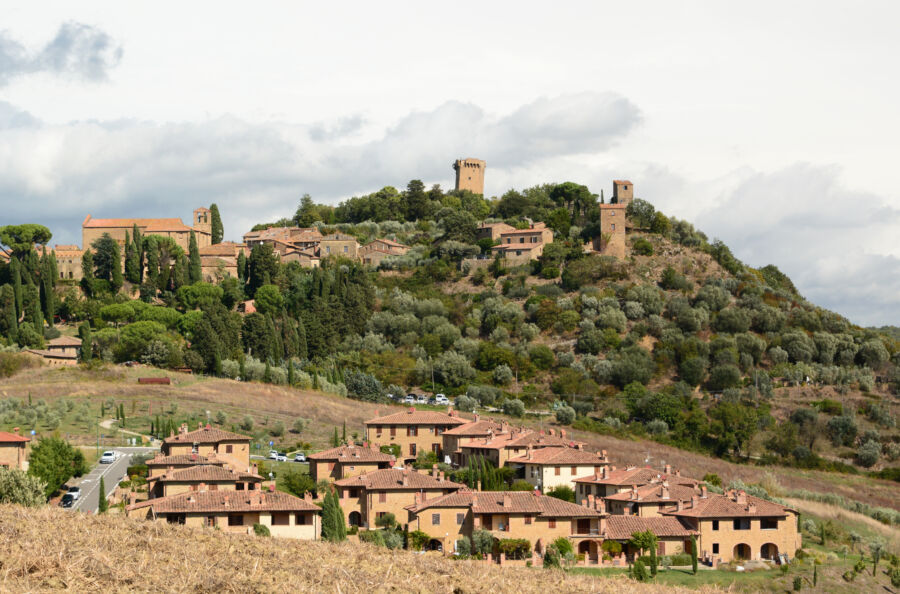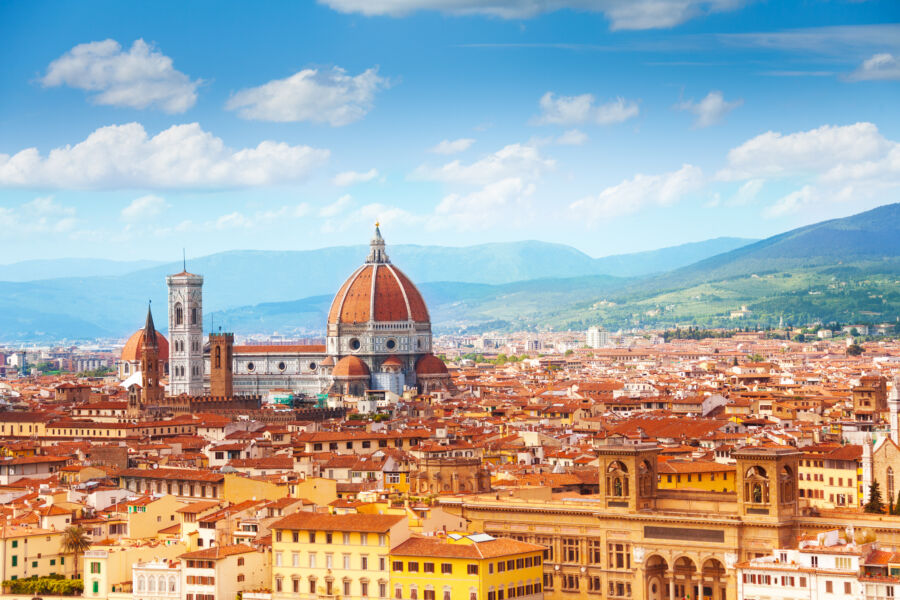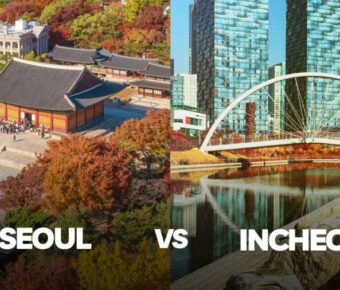
Pienza vs San Gimignano: 7 Key Differences Between Tuscany’s Medieval Gems Worth Knowing Before Your 2025 Visit
When choosing between Pienza and San Gimignano, two of Tuscany’s most charming towns, travelers face a delightful dilemma. Eacsh town offers a distinct experience of Tuscan beauty, with Pienza showcasing the stunning Val d’Orcia landscape, while San Gimignano is famous for its medieval towers and walls.
San Gimignano draws visitors with its distinctive skyline of ancient towers and well-preserved medieval architecture. However, it can get crowded during peak tourist seasons, though visiting in March offers a quieter experience. Pienza, designed as an “ideal city” during the Renaissance, sits in southern Tuscany and provides access to some of the most scenic countryside in Italy.
The towns lie about 90 minutes apart, so your choice might depend on which region of Tuscany you want to explore. Pienza makes an excellent base for exploring the Val d’Orcia area, while San Gimignano offers easier access to northern Tuscan highlights. Both towns deliver authentic Italian charm, excellent food, and unforgettable views.
Contents
- Historical Context
- Pienza: A Renaissance Gem
- San Gimignano: The City of Towers
- Cultural and Artistic Highlights
- Artistic Treasures of Pienza
- San Gimignano’s Medieval Masterpieces
- Enchanting Landscapes and Architecture
- The Rolling Hills of Val d’Orcia
- San Gimignano’s Towering Silhouette
- Gastronomic Prowess and Local Cuisine
- Pienza: A Haven for Cheese Lovers
- San Gimignano: A Taste of Tradition
- Practical Information: Getting There and Around
- Transportation to Pienza
- Navigating San Gimignano
- Accommodation Options and Stay Recommendations
- Charming Stays in Pienza
- Unique Lodgings in San Gimignano
- Nearby Attractions and Day Trip Destinations
- Exploring the Proximity to Pienza
- Adventures Around San Gimignano
- Frequently Asked Questions
- What unique architectural features can be found when exploring Pienza compared to San Gimignano?
- Can you suggest some lesser-known yet captivating attractions in Pienza for history enthusiasts?
- What are the must-try local delicacies in San Gimignano for an authentic culinary experience?
- In what ways does the medieval town planning of San Gimignano differ from that of Pienza?
- Could you offer insights into the best vineyards for wine tasting near Pienza or San Gimignano?
- Are there any hidden gems for overnight stays in San Gimignano that enhance the Tuscan experience?
- More Travel Guides
Historical Context

Both Pienza and San Gimignano showcase Tuscany’s rich past through distinctly different architectural styles and historical developments. Pienza represents Renaissance ideals and planning, while San Gimignano preserves medieval tower houses that tell stories of competing noble families.
Pienza: A Renaissance Gem

Pienza has a fascinating origin story. It was originally a small village called Corsignano, where Pope Pius II was born in 1405. After becoming pope, he decided to transform his humble birthplace into an ideal Renaissance town.
Between 1459 and 1462, the pope hired architect Bernardo Rossellino to redesign the village according to humanist urban planning principles. The result was a harmonious town center with perfect proportions and elegant buildings.
The main square, Piazza Pio II, represents the heart of this Renaissance vision. It features the Cathedral, Palazzo Piccolomini, and Palazzo Comunale – all arranged to create visual balance and beauty.
Pienza’s transformation embodies Renaissance ideals of order, proportion, and human-centered design. Unlike many Tuscan towns that grew organically over centuries, Pienza was deliberately planned as a showcase of Renaissance urban ideals.
San Gimignano: The City of Towers

San Gimignano’s history stretches back to the Etruscan period, but it flourished during the Middle Ages. The town gained wealth through trade, sitting strategically along the Via Francigena pilgrimage route to Rome.
During the 12th and 13th centuries, rival noble families competed for power and prestige by building increasingly taller towers. At its peak, San Gimignano boasted 72 towers! Today, 14 of these medieval skyscrapers remain, creating the distinctive skyline that earned the town its UNESCO World Heritage status.
The town fell under Florence’s control in 1353 after being weakened by the Black Death. This political change actually helped preserve San Gimignano’s medieval character as development slowed significantly.
Unlike Pienza’s planned Renaissance layout, San Gimignano evolved organically during the Middle Ages. Its narrow winding streets, fortified walls, and stunning towers provide visitors with an authentic glimpse into medieval Tuscan life and architecture.
Cultural and Artistic Highlights

Both towns offer incredible cultural experiences, though each town showcases distinct artistic periods. Pienza celebrates Renaissance ideals through perfect urban planning, while San Gimignano preserves medieval art and architecture in a remarkably authentic setting.
Artistic Treasures of Pienza

Pienza’s greatest cultural jewel is the magnificent Duomo di Pienza in the main Piazza Pio II. This Renaissance cathedral features a stunning façade that captures the period’s emphasis on harmony and proportion. Visitors can admire beautiful paintings by Sienese masters and an impressive collection of tapestries.
Palazzo Piccolomini is another must-see Renaissance masterpiece. Designed by Bernardo Rossellino, it offers visitors access to elegant rooms with period furnishings and a hanging garden with breathtaking views of Val d’Orcia.
The town itself is essentially an artistic creation. Pope Pius II transformed his humble birthplace into an ideal Renaissance city, making the entire urban layout a testament to humanist principles. Even the streets were carefully named to evoke poetic feelings – like Via dell’Amore (Love Street) and Via del Bacio (Kiss Street).
San Gimignano’s Medieval Masterpieces

San Gimignano’s iconic towers define its skyline and cultural identity. These medieval skyscrapers weren’t just defensive structures but status symbols for wealthy families. Of the original 72 towers, 14 remain today, creating a skyline often called “Medieval Manhattan.”
The Collegiate Church houses extraordinary frescoes that cover nearly every wall. These colorful scenes depicting Heaven and Hell were medieval teaching tools for a largely illiterate population. The work of artists like Benozzo Gozzoli and Domenico Ghirlandaio showcases the town’s artistic importance during the Middle Ages.
The Civic Museum in Palazzo Comunale is essential for art lovers. It contains masterpieces by Filippino Lippi, Pinturicchio, and local maestros. Lippo Memmi’s famous fresco cycle of the “Maestà” stands as one of Tuscany’s finest medieval artworks.
The town’s narrow streets and well-preserved buildings create an authentic medieval atmosphere that transports visitors back in time.
See Related: Unforgettable Religious Tours in Italy: Transform Your Faith Journey in the Jubilee Year
Enchanting Landscapes and Architecture

Both towns offer visitors stunning visual experiences that capture the essence of Tuscany. The landscapes surrounding these towns and their distinctive architectural features create entirely different but equally memorable experiences.
The Rolling Hills of Val d’Orcia

Pienza sits like a crown jewel in the UNESCO-protected Val d’Orcia, one of Tuscany’s most breathtaking landscapes. The rolling hills surrounding the town create waves of green and gold that change with the seasons. The fields turn vibrant green in spring, while summer brings golden wheat and sunflowers.
The countryside near Pienza features those classic Tuscan scenes you’ve seen in postcards – cypress-lined roads winding through gentle hills and farmhouses perched atop ridges. Many visitors find themselves stopping constantly for photos, especially along the road between Pienza and San Quirico d’Orcia.
What makes Val d’Orcia truly special is how the landscape and architecture blend seamlessly. The honey-colored buildings of Pienza were designed during the Renaissance to create a “perfect town” that harmonizes with its surroundings.
San Gimignano’s Towering Silhouette

San Gimignano presents a completely different visual experience with its dramatic medieval skyline. The town’s famous towers create a unique silhouette visible for miles across the Tuscan countryside. Of the original 72 towers built by competing noble families during the medieval period, 14 survive today.
These stone sentinels rise dramatically above the town walls, giving San Gimignano its nickname “Medieval Manhattan.” The tallest, Torre Grossa, stands 54 meters high and offers panoramic views of the surrounding vineyards and olive groves.
The town itself is beautifully preserved, with narrow cobblestone streets and medieval architecture that transport visitors back in time. Despite the dramatic vertical elements, the warm terracotta and stone buildings create a visual harmony.
Unlike the open panoramas of Val d’Orcia, San Gimignano’s countryside features more intimate landscapes with vineyards producing the famous Vernaccia wine right up to the town walls.
Gastronomic Prowess and Local Cuisine

Both towns offer incredible food experiences that showcase the best of Tuscan cuisine, each with its own special local specialties worth seeking out.
Pienza: A Haven for Cheese Lovers

Pienza is famous as the pecorino capital of Tuscany. The sheep’s milk cheese produced here is simply outstanding and comes in several varieties ranging from fresh to aged. You’ll find numerous cheese shops along the main streets where friendly shopkeepers offer generous samples.
The town’s signature Pecorino di Pienza has a rich, nutty flavor that varies based on aging time. Many shops age their cheeses in unique ways – some with hay, others with walnut leaves or even truffles!
Local restaurants showcase this amazing cheese in dishes like pici pasta with pecorino sauce or simple bruschetta topped with honey and fresh pecorino. Many eateries also feature excellent local wines from nearby Montepulciano and Montalcino regions.
For the full experience, visit during the cheese festival in September when the whole town celebrates its gastronomic treasure.
San Gimignano: A Taste of Tradition

San Gimignano offers a different but equally impressive culinary scene centered around its historic foods and notable wine. The town’s signature wine, Vernaccia di San Gimignano, is a crisp white that perfectly complements the local cuisine. It was the first Italian wine to receive DOC status!
The town is also known for its saffron production, which dates back to medieval times. Many restaurants incorporate this precious spice into risottos and other traditional dishes.
Local trattorias serve hearty Tuscan classics like wild boar pasta, ribollita (bread soup), and pappa al pomodoro. Don’t miss trying the town’s famous gelato – Gelateria Dondoli in the main square has won world championships!
For wine lovers, there are numerous tasting rooms around town offering Vernaccia alongside excellent Chianti. Many also serve small plates of local salamis, cheeses, and olive oils that showcase the region’s bounty.
See Related: 10 Day Italy Trip Cost: Budget Your Dream Vacation
Practical Information: Getting There and Around

Both towns have different transportation options and considerations for parking and navigation. Here’s what you need to know to plan your Pienza and San Gimignano trip.
Transportation to Pienza

Reaching Pienza by public transportation can be challenging but doable. The nearest train stations are Chiusi or Montepulciano, followed by a bus connection. If you’re coming from San Gimignano, expect a journey of about 4-5 hours using a combination of buses and trains.
Renting a car gives you the most flexibility for exploring Val d’Orcia’s rolling hills surrounding Pienza. The scenic drive alone is worth it! Rental cars can be arranged in larger Tuscan cities.
Parking in Pienza is available in several lots outside the historic center. The main parking areas (P1 and P2) are just a short walk from the town center. Expect to pay €1-2 per hour depending on the season.
Set your GPS to “Pienza parking” rather than the town center to avoid narrow, restricted streets. Once you’ve parked, the town is small enough to explore entirely on foot.

San Gimignano is more accessible by public transportation than Pienza. Regular buses connect from Poggibonsi train station, making day trips from Florence or Siena straightforward. The bus terminal is conveniently located near Porta San Giovanni.
The town has multiple parking areas, with the largest lots (P1, P3, and P4) located outside the walls. Parking fees range from €2-5 per hour depending on season and proximity to the center. Summer months see parking fill quickly, so arrive early!
San Gimignano’s historic center is pedestrian-only. The town sits on a hill with some steep streets, so wear comfortable shoes. The main attractions cluster around Piazza della Cisterna and Piazza del Duomo.
For day trips from San Gimignano, having a car allows you to visit nearby attractions like Volterra (30 minutes) or Chianti vineyards. Just remember many GPS systems struggle with Tuscany’s winding rural roads.
Accommodation Options and Stay Recommendations

When planning your Tuscan adventure, choosing the right place to stay can make all the difference in your experience. Both towns offer charming accommodations with their own unique character and atmosphere.
Charming Stays in Pienza

Pienza offers some truly delightful places to rest your head after a day of exploring the stunning Val d’Orcia landscape. Il Chiostro di Pienza is a popular option in the town center. This former convent provides a unique historical experience with rooms starting at around $200 per night.
Pienza’s quieter atmosphere makes it perfect for travelers seeking peace. Many accommodations here offer breathtaking views of the rolling Tuscan countryside, which will have you reaching for your camera first thing in the morning.
Small family-run B&Bs dot the landscape both in town and in the surrounding countryside. These often provide more authentic experiences and personal touches than larger hotels, with hosts happy to recommend local restaurants and wineries.
Unique Lodgings in San Gimignano

San Gimignano’s accommodations tend to be busier during peak seasons, reflecting the town’s popularity. While staying overnight isn’t necessary for many visitors who come just for day trips, those who linger are rewarded with quieter evenings after the tour buses depart.
The medieval tower houses that make San Gimignano famous also provide some of its most distinctive lodging options. Several have been converted into luxury apartments and boutique hotels, allowing visitors to experience these historic structures firsthand.
Agriturismo options surround the town, offering farm stays among the vineyards. These rural retreats typically include breakfast featuring products made on-site and sometimes offer cooking classes or wine tastings.
For budget travelers, several hostels and affordable B&Bs make San Gimignano accessible without breaking the bank.
Nearby Attractions and Day Trip Destinations

Pienza and San Gimignano are excellent bases for exploring Tuscany’s treasures. The surrounding areas offer picturesque landscapes, historic towns, and world-class wineries that make for unforgettable day trips.
Exploring the Proximity to Pienza

Pienza sits in the stunning Val d’Orcia, one of Tuscany’s most scenic regions. The gorgeous rolling hills and cypress-lined roads around Pienza are perfect for leisurely drives or bike tours.
Just 15 minutes away lies Montepulciano, a medieval hilltop town famous for its Vino Nobile wines. Wine lovers can explore numerous cellars built underneath the town’s buildings.
Montalcino, about 30 minutes from Pienza, produces the celebrated Brunello wine. The town’s impressive fortress offers breathtaking views of the countryside.
Siena, roughly an hour’s drive, is an essential day trip. Its shell-shaped Piazza del Campo, which hosts the famous Palio horse race twice yearly, is surrounded by medieval buildings and the striking Duomo.
Adventures Around San Gimignano

San Gimignano’s central location in Tuscany makes it ideal for exploring the northern parts of the region. The town sits perfectly positioned for visits to major cities and charming villages.
Florence lies just an hour north, offering Renaissance masterpieces in the Uffizi Gallery and architectural wonders like Brunelleschi’s dome. Day-trippers can easily catch a morning bus and return by evening.
The Chianti wine region stretches between San Gimignano and Florence, dotted with castles and vineyards. Wine-tasting tours through towns like Greve and Castellina offer delightful experiences.
Siena is just 30 minutes away, making it an easy half-day excursion. The medieval streets and impressive cathedral shouldn’t be missed.
Volterra, an ancient Etruscan settlement, sits 30 minutes west. Its alabaster workshops and well-preserved Roman theater provide fascinating glimpses into history.
See Related: What to Pack for Italy: Essential Gear for Your Dream Mediterranean Getaway
Frequently Asked Questions

Travelers often wonder about the differences between these two captivating Tuscan towns. Both offer unique experiences but have distinct characteristics that might make one more appealing depending on your interests.
What unique architectural features can be found when exploring Pienza compared to San Gimignano?
Pienza showcases Renaissance urban planning at its finest. Pope Pius II redesigned the town in the 15th century as the “ideal Renaissance city.” Its main square, Piazza Pio II, features harmonious buildings designed by architect Bernardo Rossellino.
The Palazzo Piccolomini stands out with its three-story loggia, offering breathtaking views of Val d’Orcia. Pienza’s Cathedral has a unique mix of Renaissance and Gothic elements that reflect its construction during the transitional period.
San Gimignano, by contrast, is famous for its medieval tower houses. Once numbering more than 70, today, 14 towers remain, creating the town’s distinctive skyline. These towers were built by wealthy families as symbols of power and prestige.
Can you suggest some lesser-known yet captivating attractions in Pienza for history enthusiasts?
The Pieve di Corsignano just outside Pienza is often overlooked but absolutely worth visiting. This is the church where Pope Pius II was baptized, featuring incredible Romanesque architecture and mysterious symbolic carvings.
The Museo Diocesano houses a remarkable collection of religious artifacts and paintings from the 14th to 17th centuries. Look for works by Pietro Lorenzetti and Vecchietta that aren’t usually mentioned in guidebooks.
The ancient underground granaries beneath Palazzo Piccolomini offer a fascinating glimpse into medieval food storage. These are only open during certain times, so timing your visit is essential.
What are the must-try local delicacies in San Gimignano for an authentic culinary experience?
Vernaccia di San Gimignano is the town’s signature white wine. It was the first Italian wine to receive DOC status and has a crisp, mineral quality that pairs perfectly with local dishes.
Saffron has been produced in San Gimignano since the Middle Ages. For an authentic taste of this precious spice, try saffron-infused risotto or pasta dishes in local restaurants.
The town is also known for its wild boar (cinghiale) dishes. Whether served as a ragù with pasta or a hearty stew, this is traditional Tuscan cuisine at its finest.
Local bakeries offer delicious ricciarelli, traditional almond cookies from the 14th century. They make perfect gifts to take home, too!
In what ways does the medieval town planning of San Gimignano differ from that of Pienza?
San Gimignano grew organically during medieval times, resulting in narrow, winding streets that follow the natural contours of the hill. Its layout was defensive in nature, with walls and towers designed to protect the town.
The central squares, Piazza della Cisterna and Piazza del Duomo evolved naturally as gathering places rather than being deliberately planned. This creates a more spontaneous, authentic medieval atmosphere.
Pienza, conversely, was redesigned with Renaissance principles of symmetry and proportion. Pope Pius II demolished parts of his birthplace to create an ideal town with straight streets and harmonious buildings arranged around a central piazza.
Could you offer insights into the best vineyards for wine tasting near Pienza or San Gimignano?
Near Pienza, Podere Il Casale offers organic wine tastings with spectacular views over the Val d’Orcia. Their small-production wines include excellent Rosso di Montepulciano and white blends unique to the region.
Tenuta di Trinoro in the nearby Val d’Orcia produces exceptional Super Tuscans in limited quantities. Their tastings are by appointment only but provide an intimate experience with some of Tuscany’s finest wines.
Around San Gimignano, Tenuta Torciano provides a comprehensive tasting experience with traditional Tuscan dishes paired with their Vernaccia and Chianti wines. Their hospitality makes visitors feel like family.
Fattoria di Fugnano, a small family-run winery just outside San Gimignano, offers tastings of their award-winning Vernaccia in a charming, unpretentious setting with stunning views of the towers.
Leon Bianco, a historic hotel located directly on Piazza della Cisterna, offers the magical experience of having the town to yourself in the evening after day-trippers leave.
Agriturismo Poggiacolle, just outside the town walls, offers a rustic farm stay experience. Its self-catering apartments are in a converted farmhouse. The infinity pool overlooks vineyards with San Gimignano in the distance.
B&B Le Undici Lune occupies a medieval building with just four rooms, each uniquely decorated with local antiques. The rooftop terrace offers breathtaking views of the Tuscan countryside and town towers.



